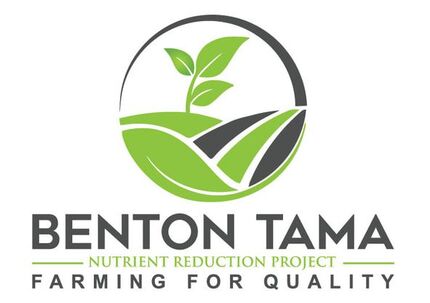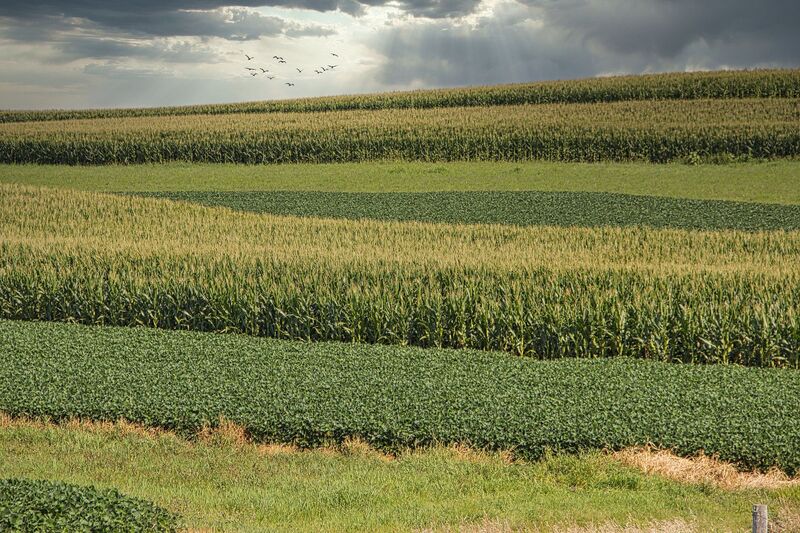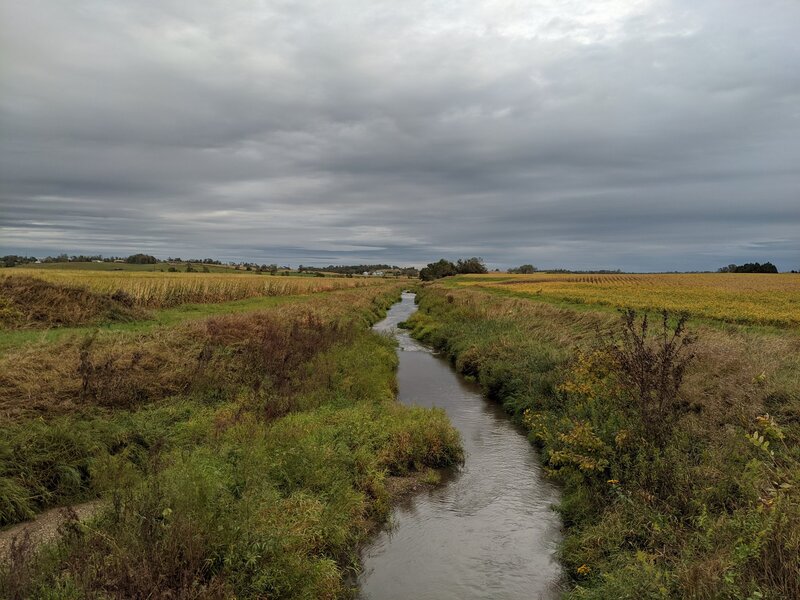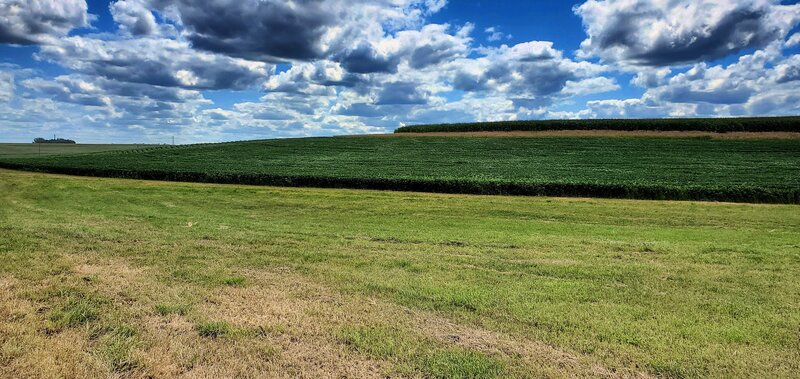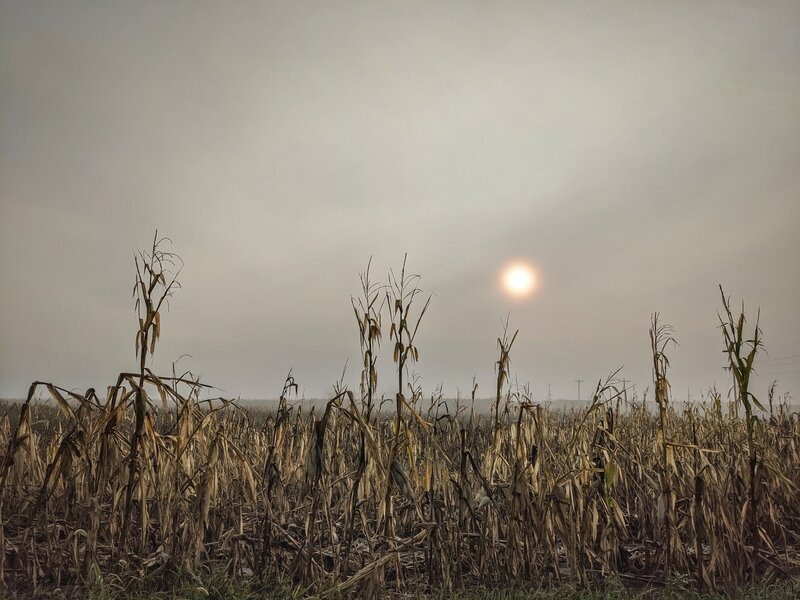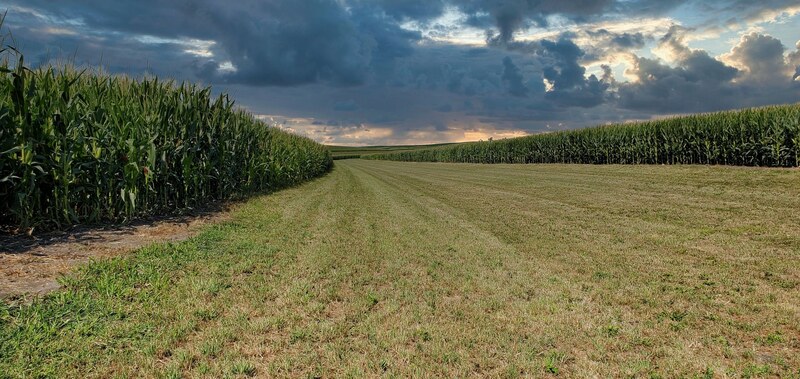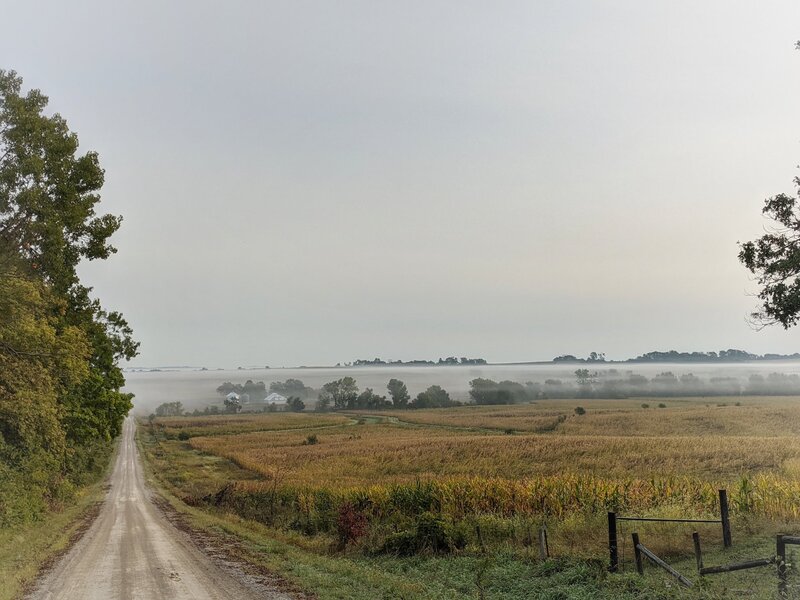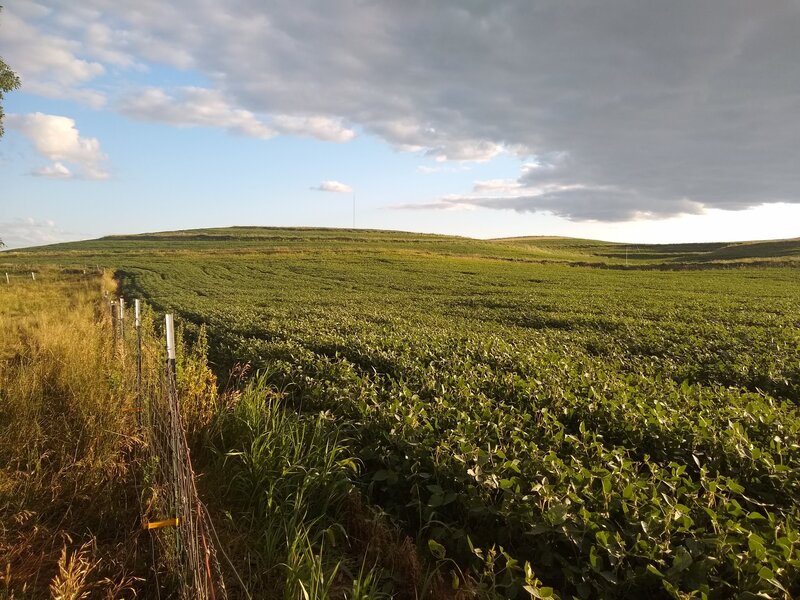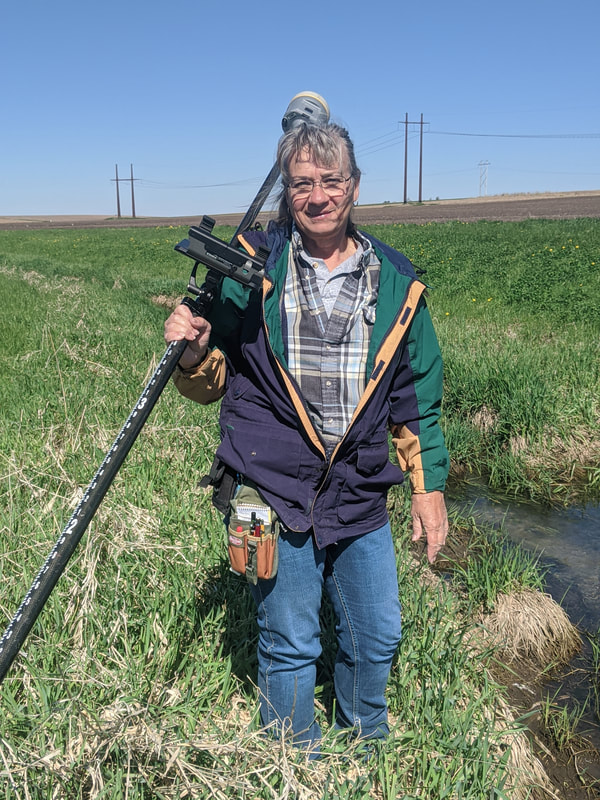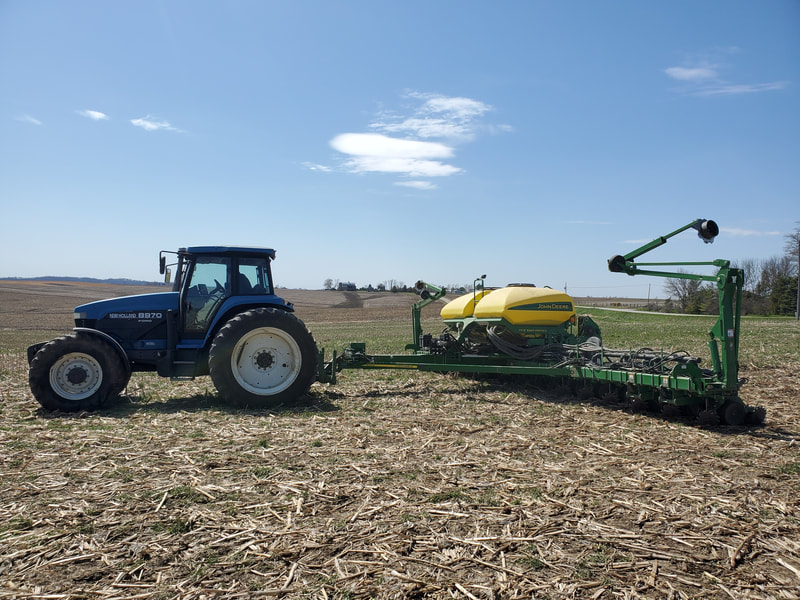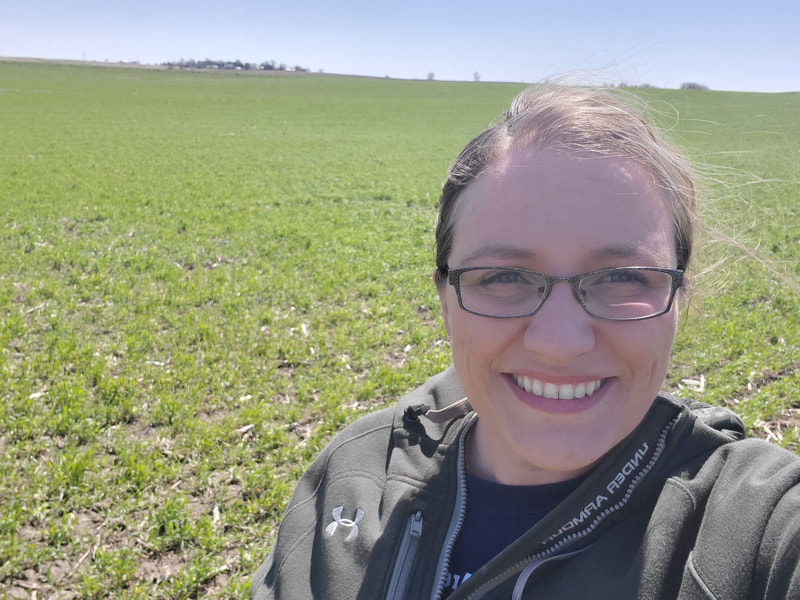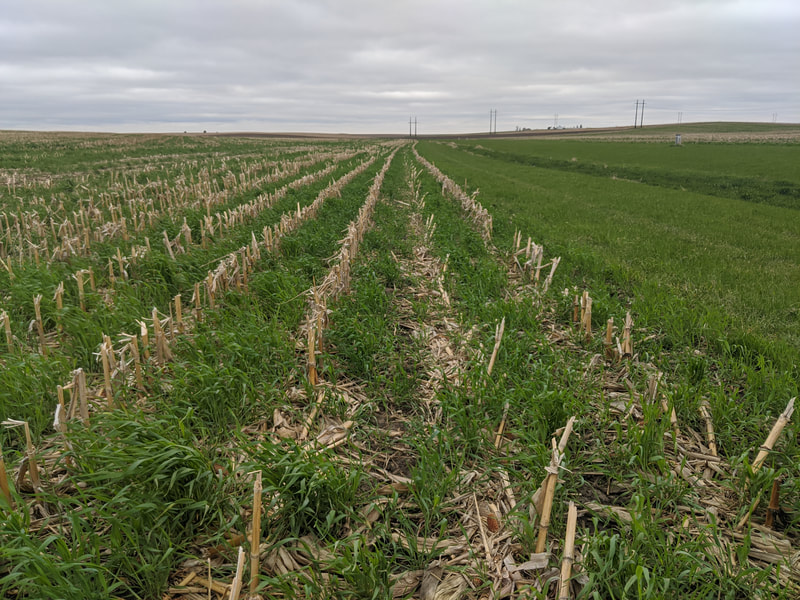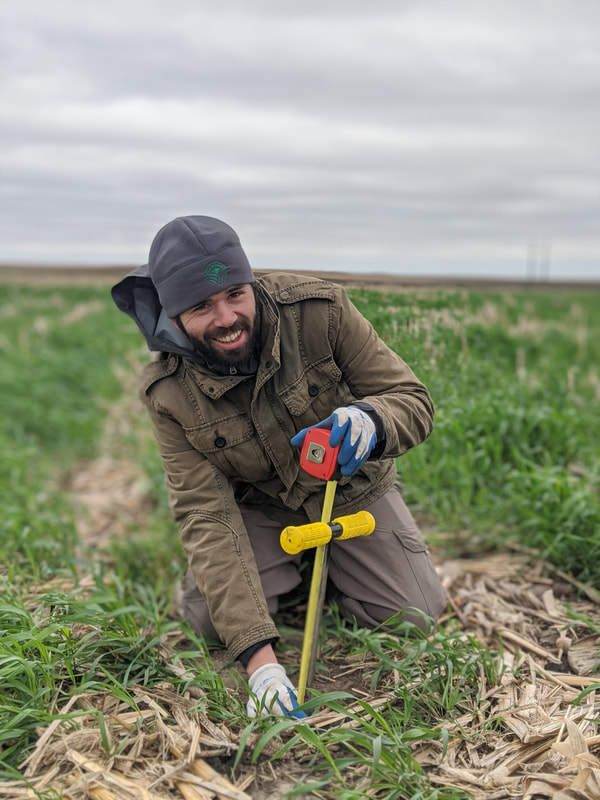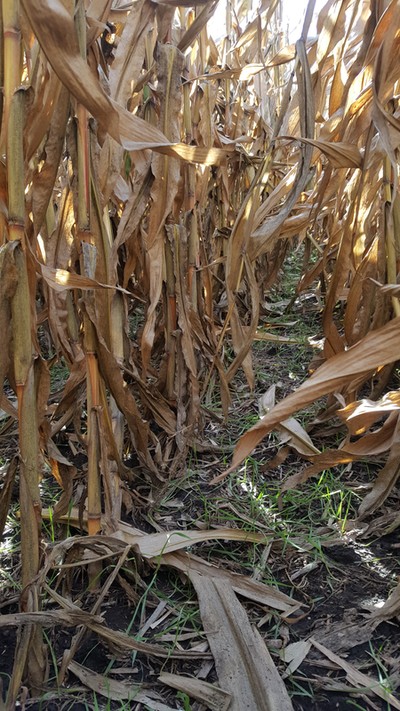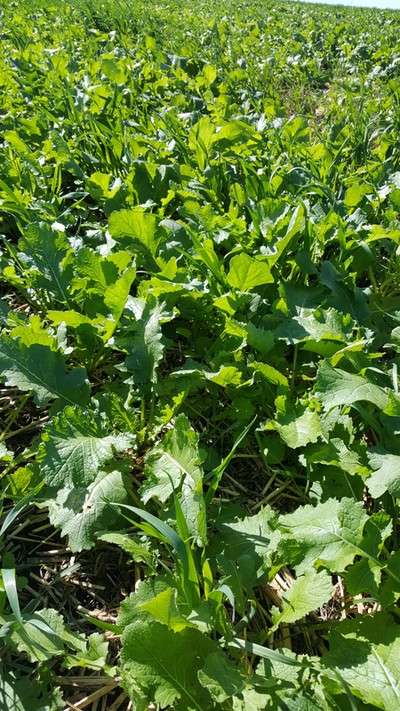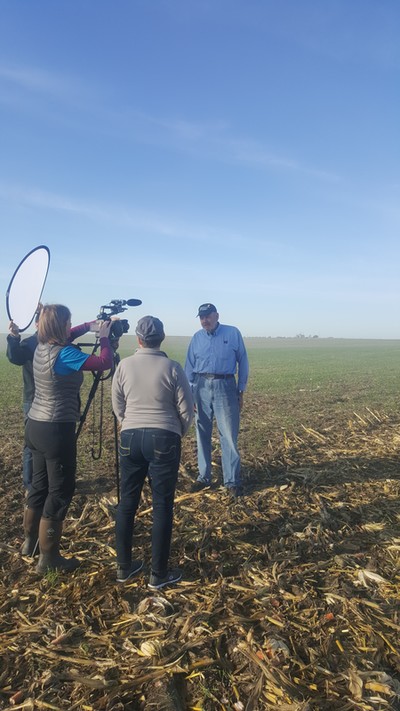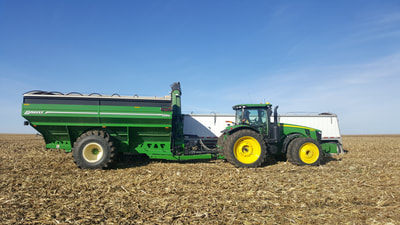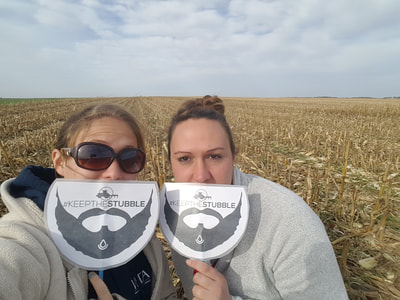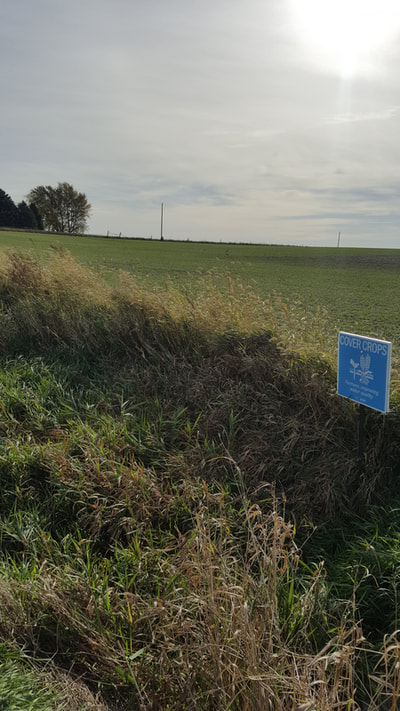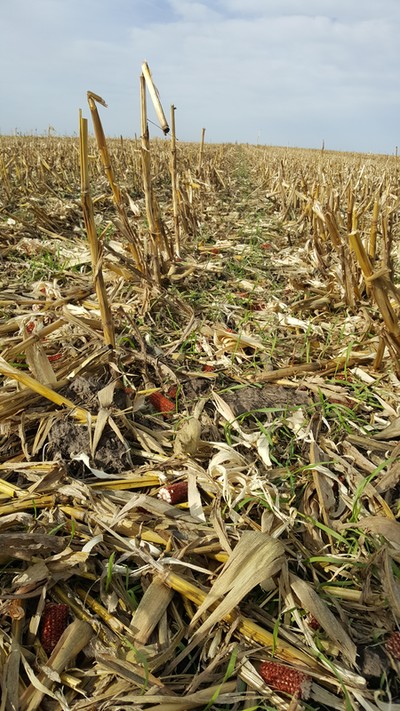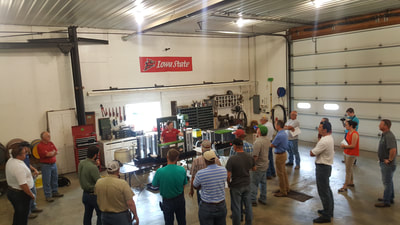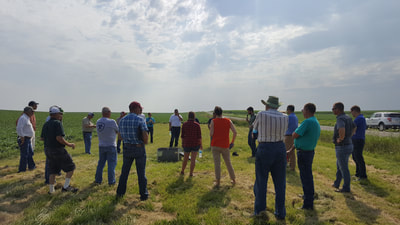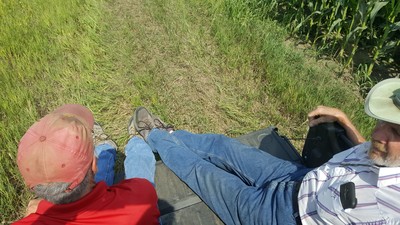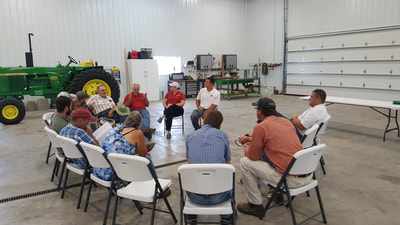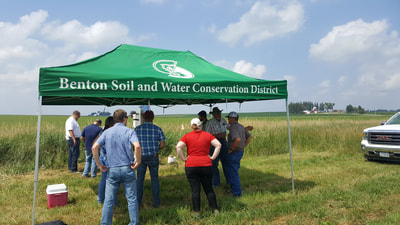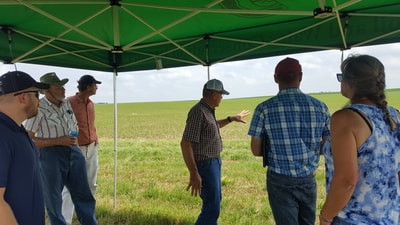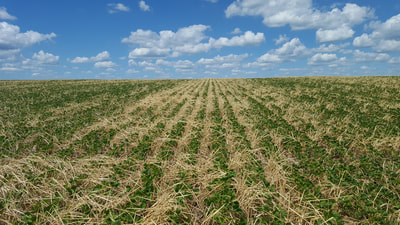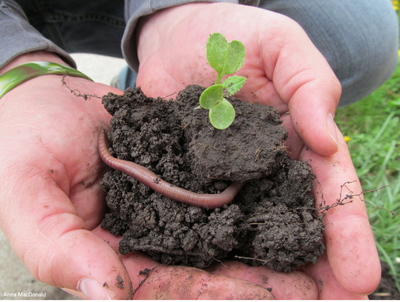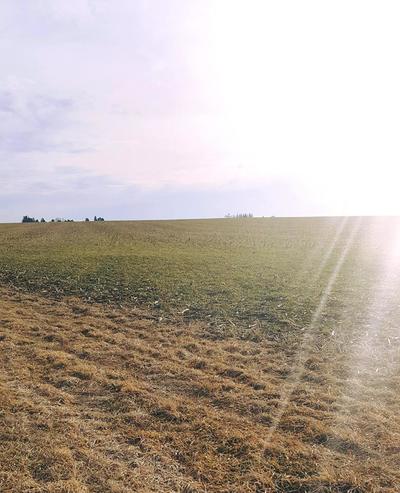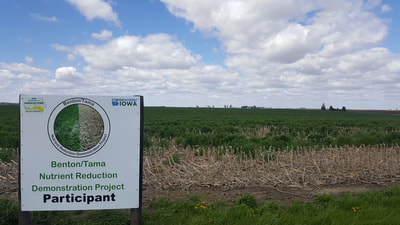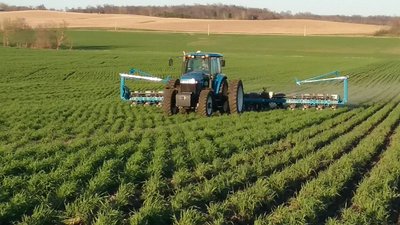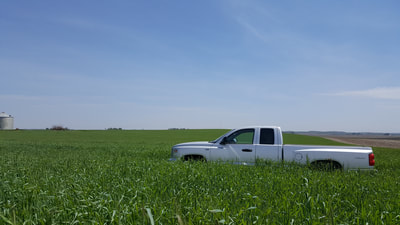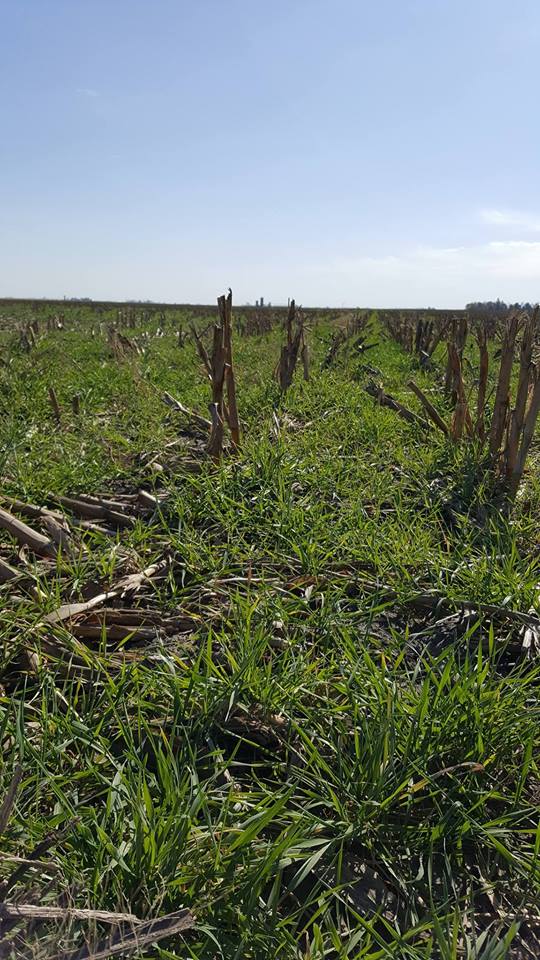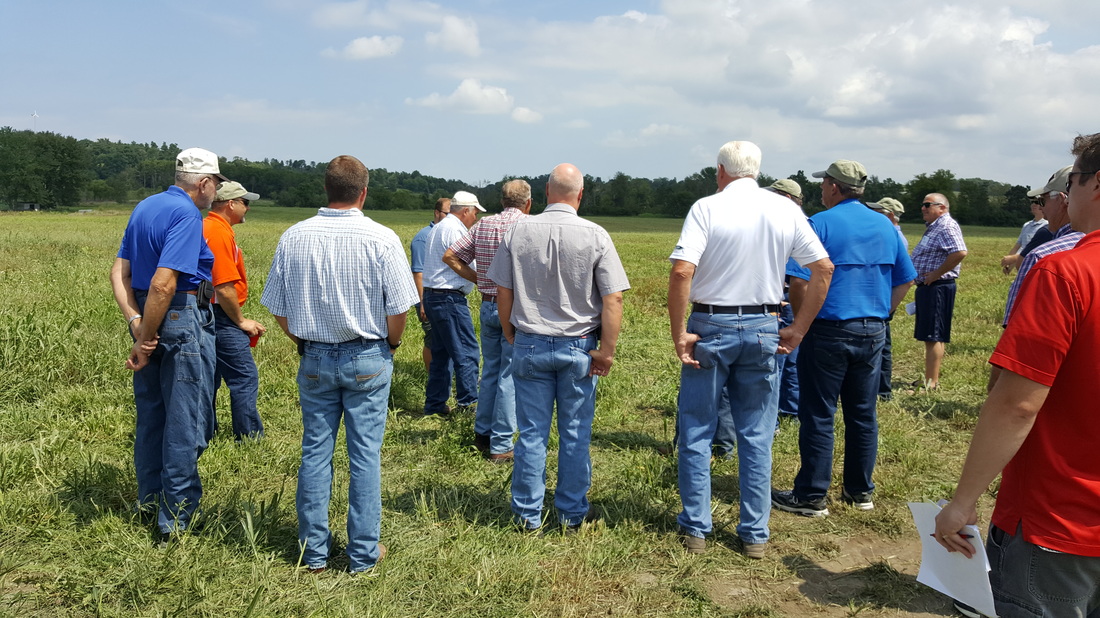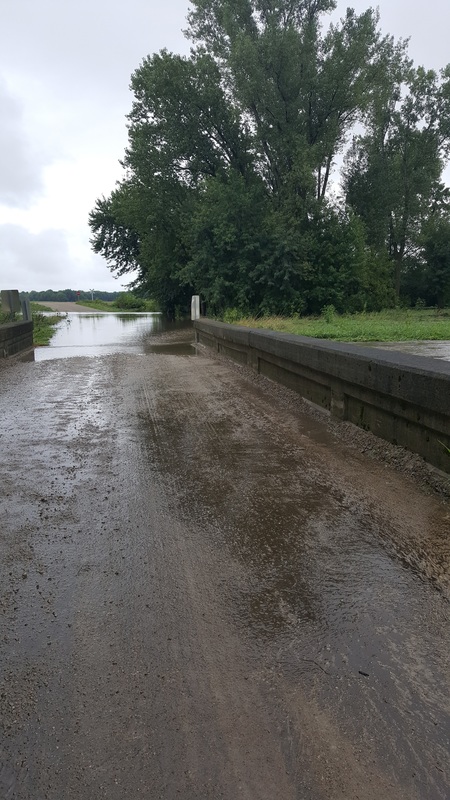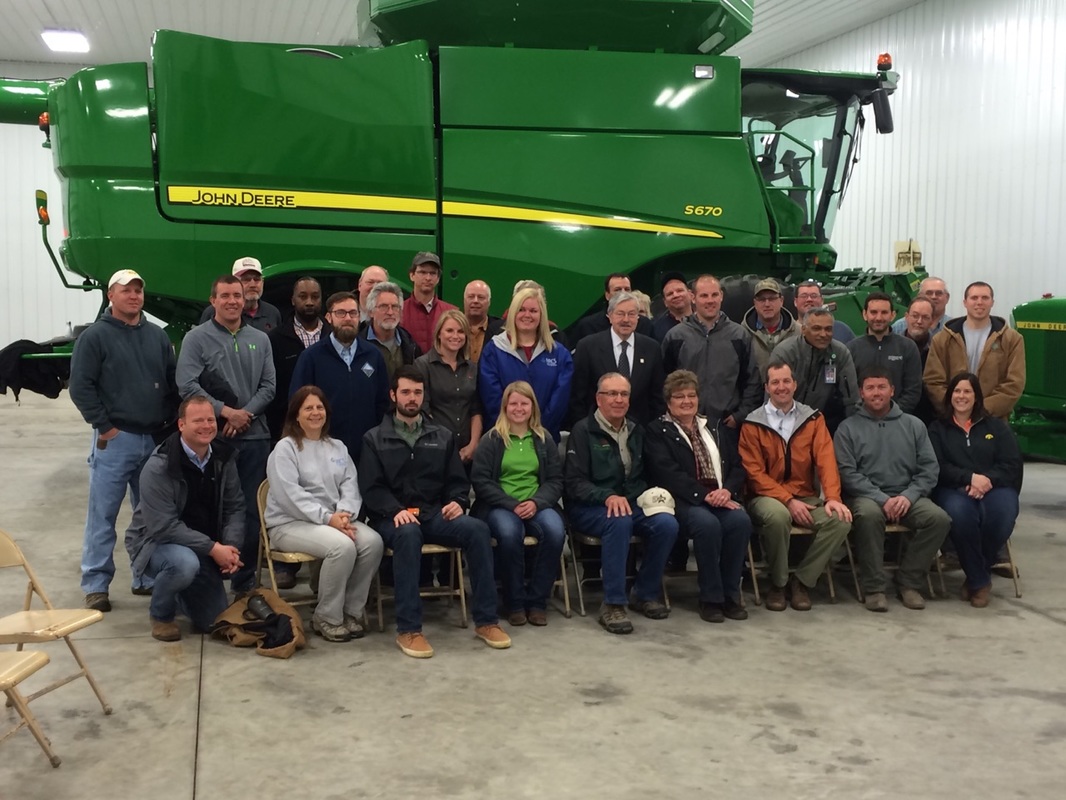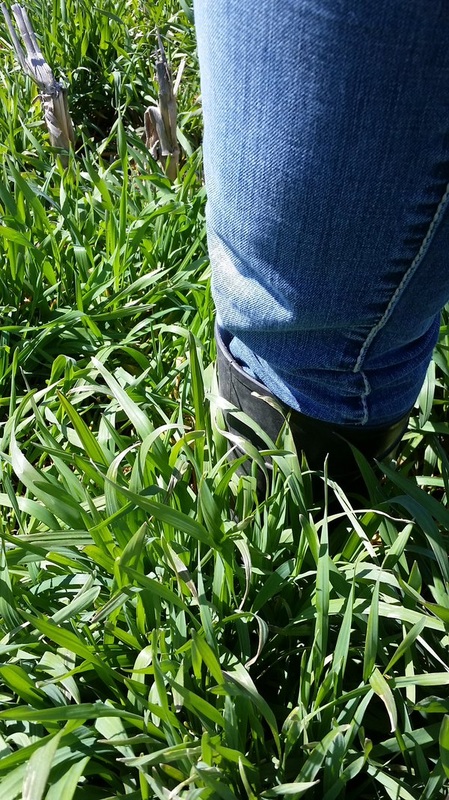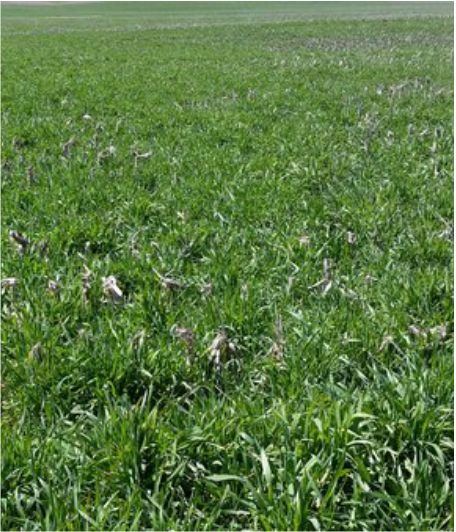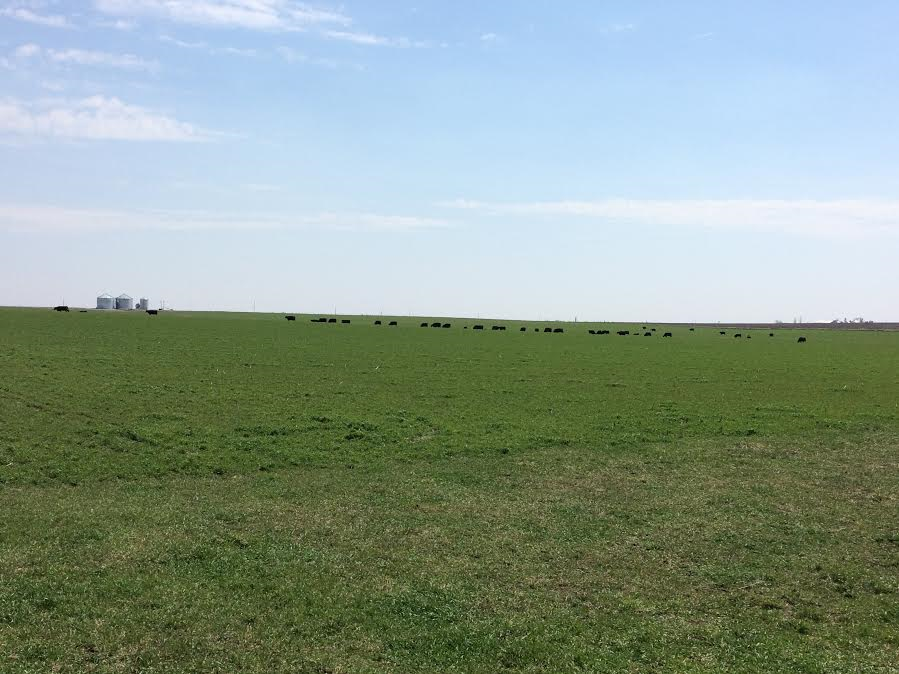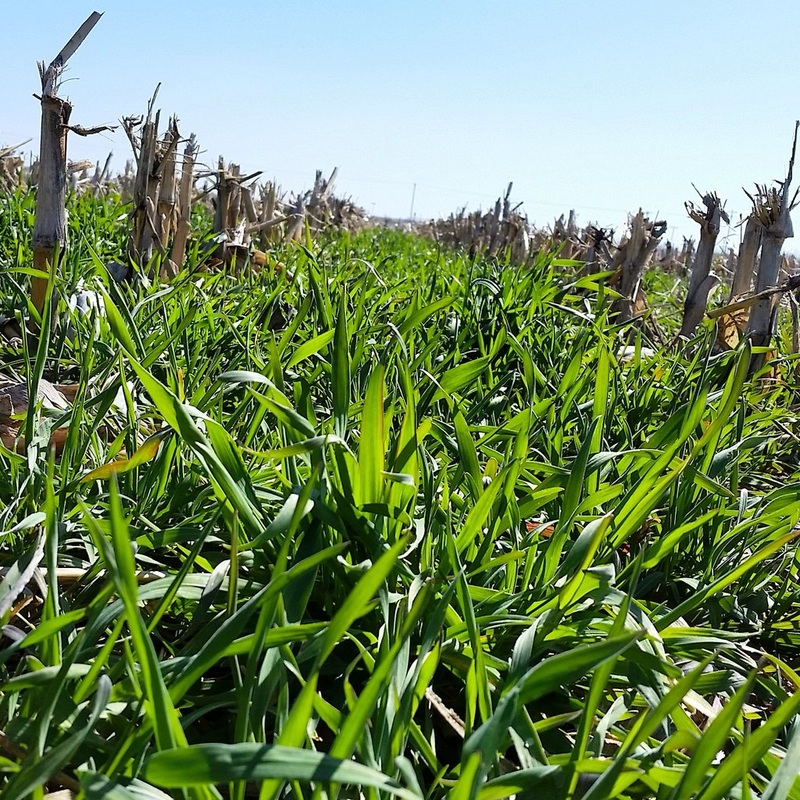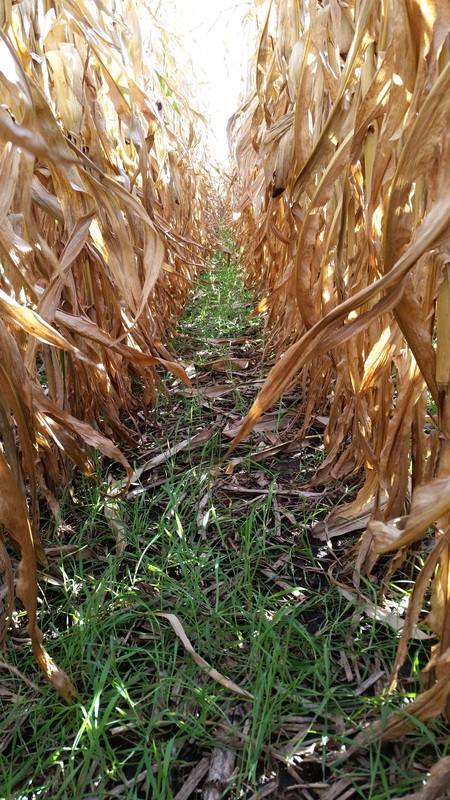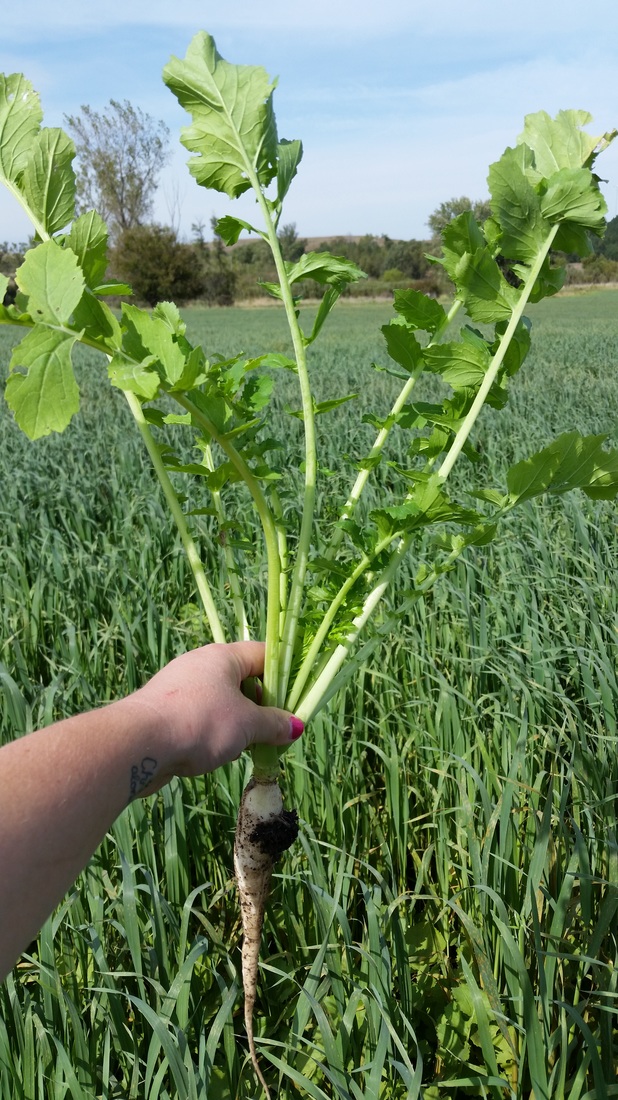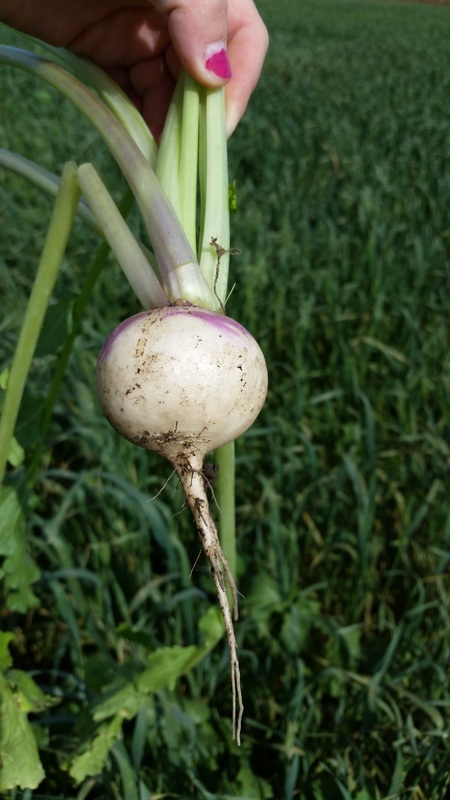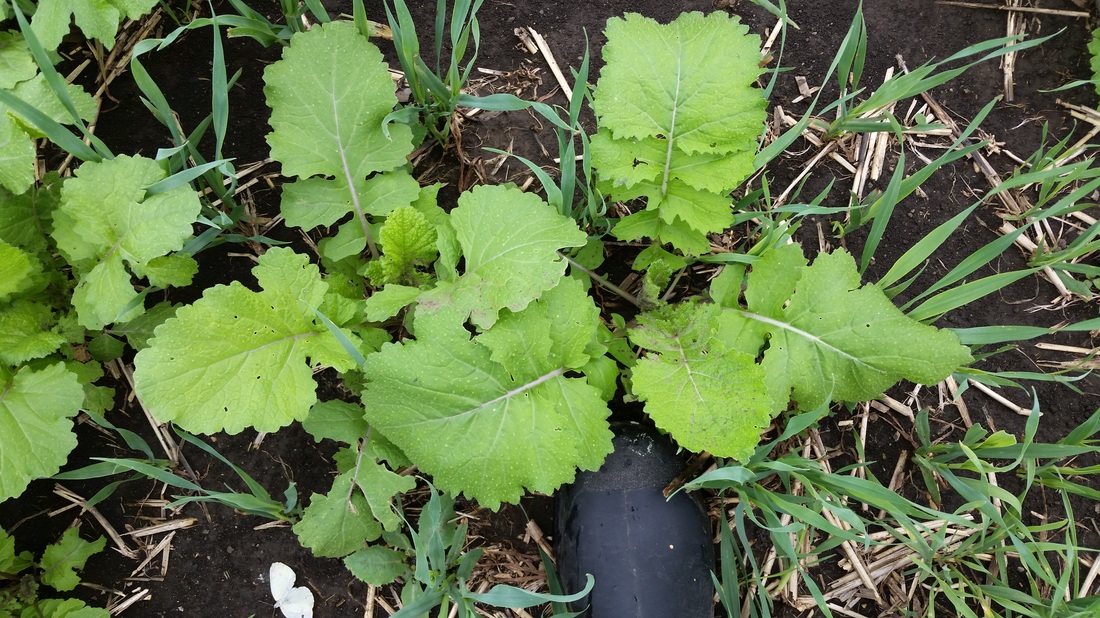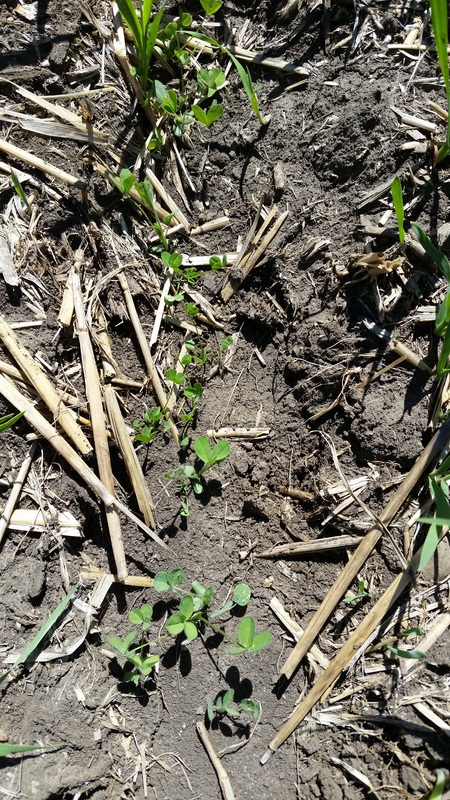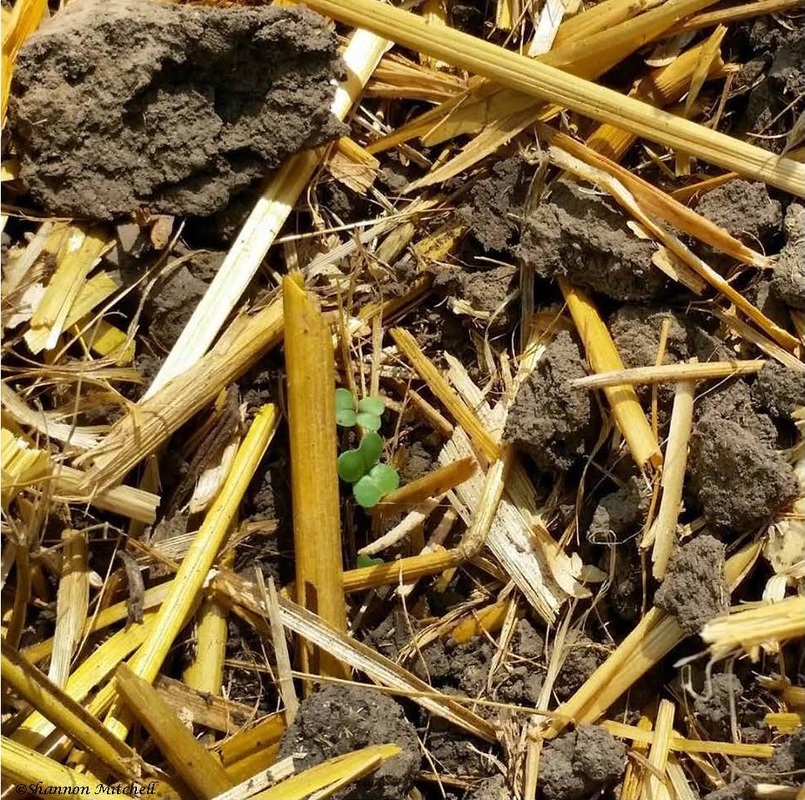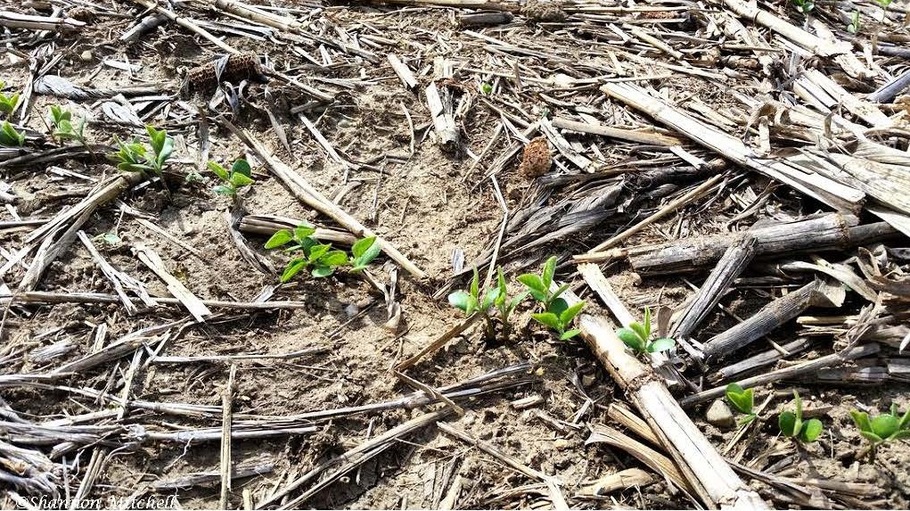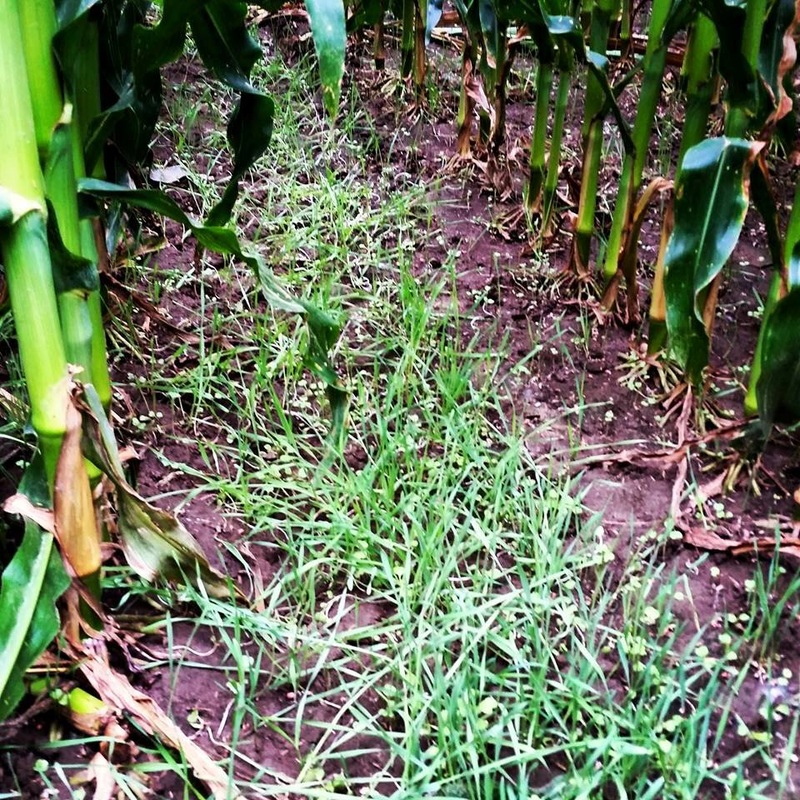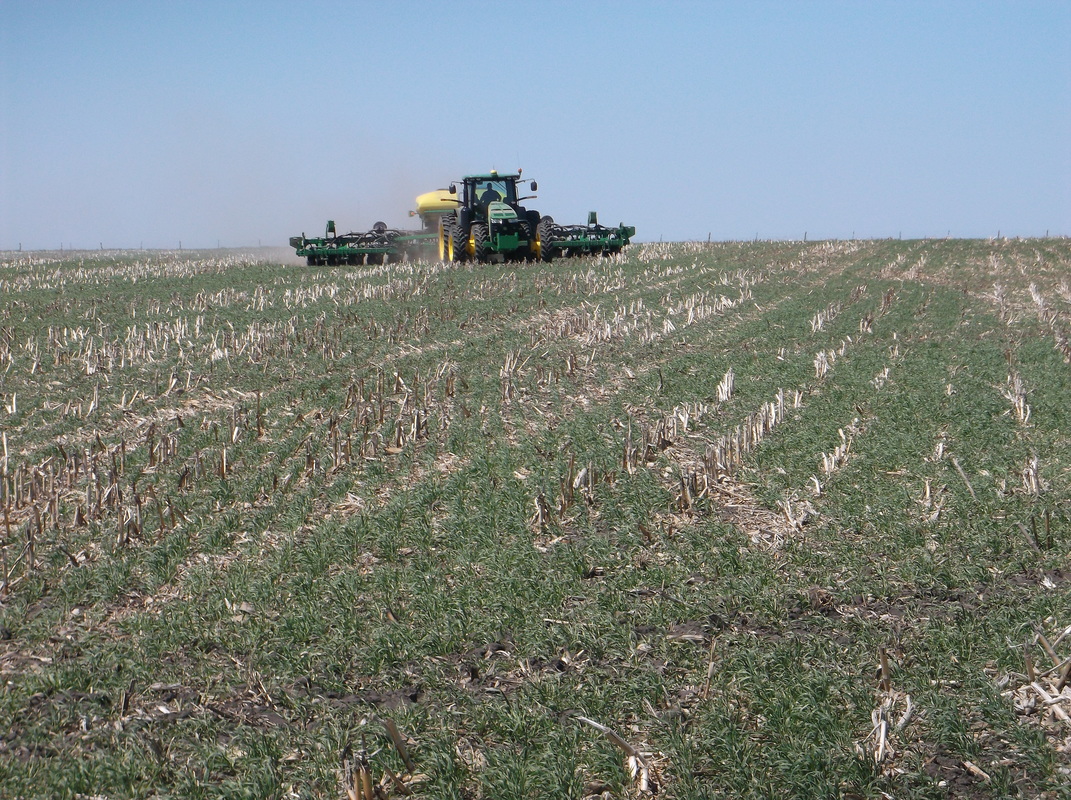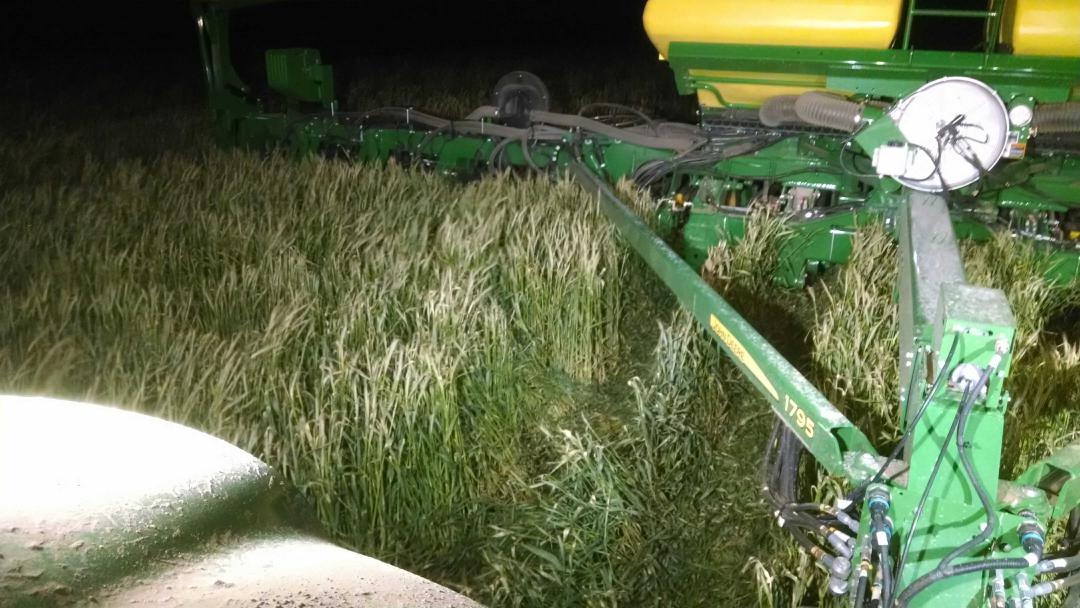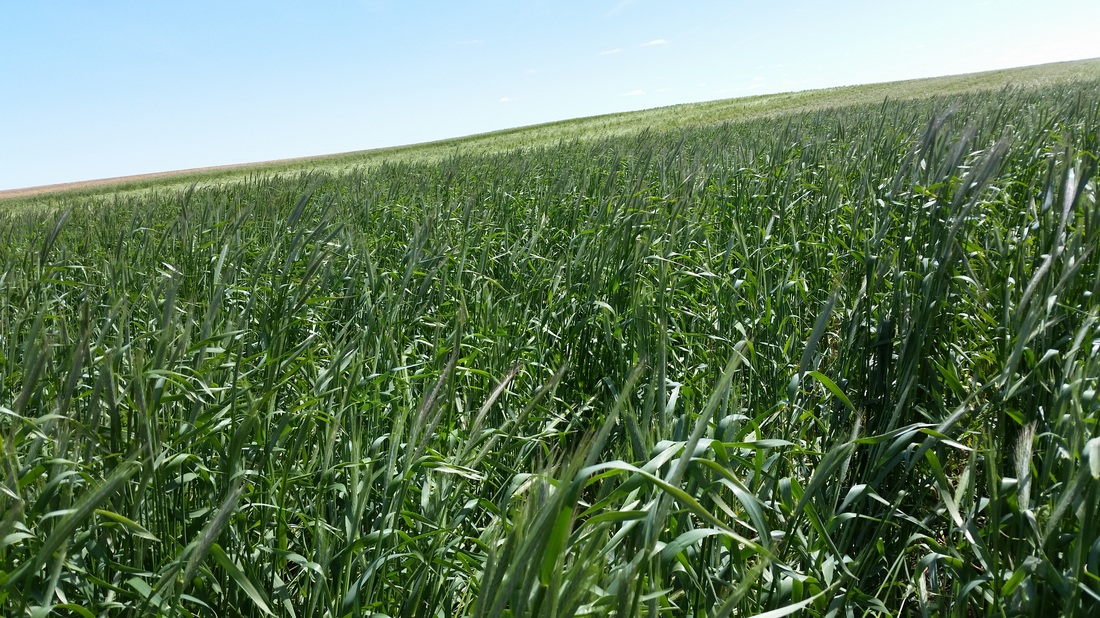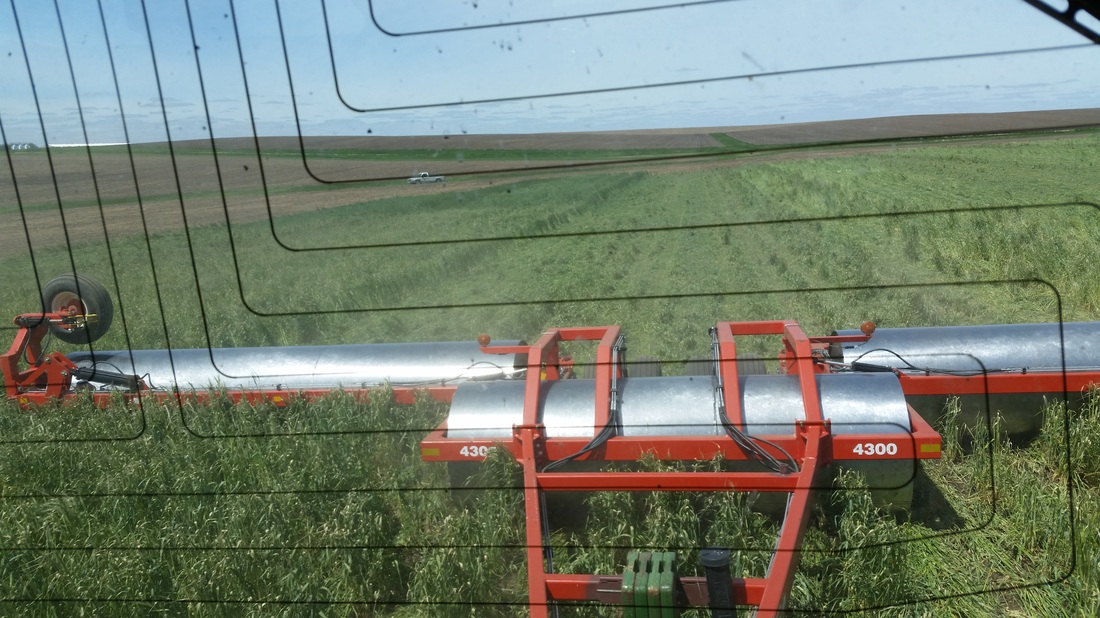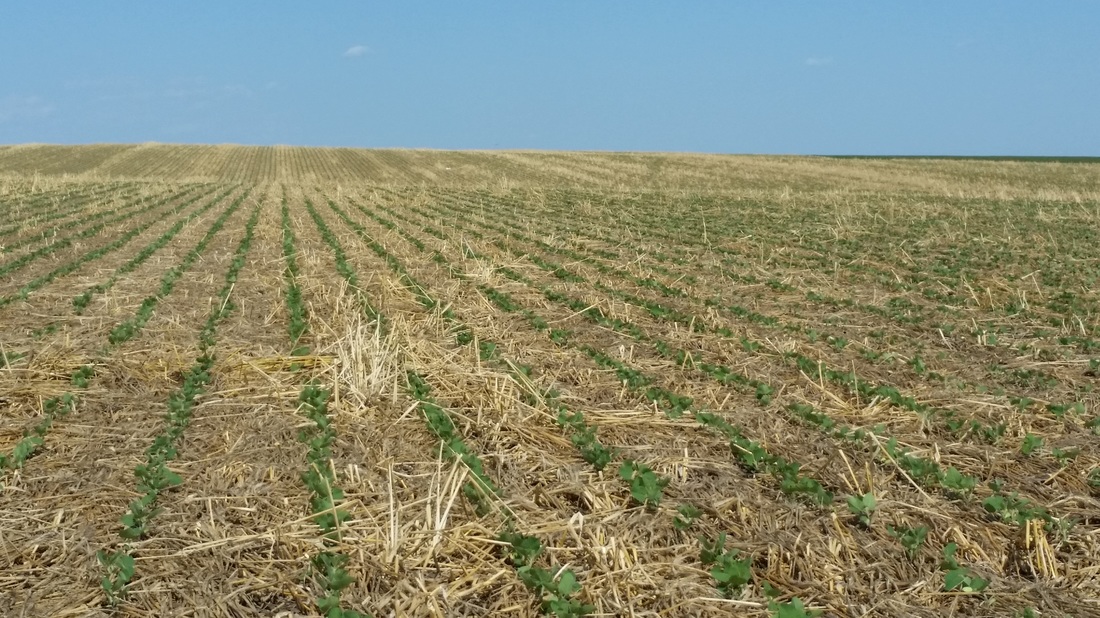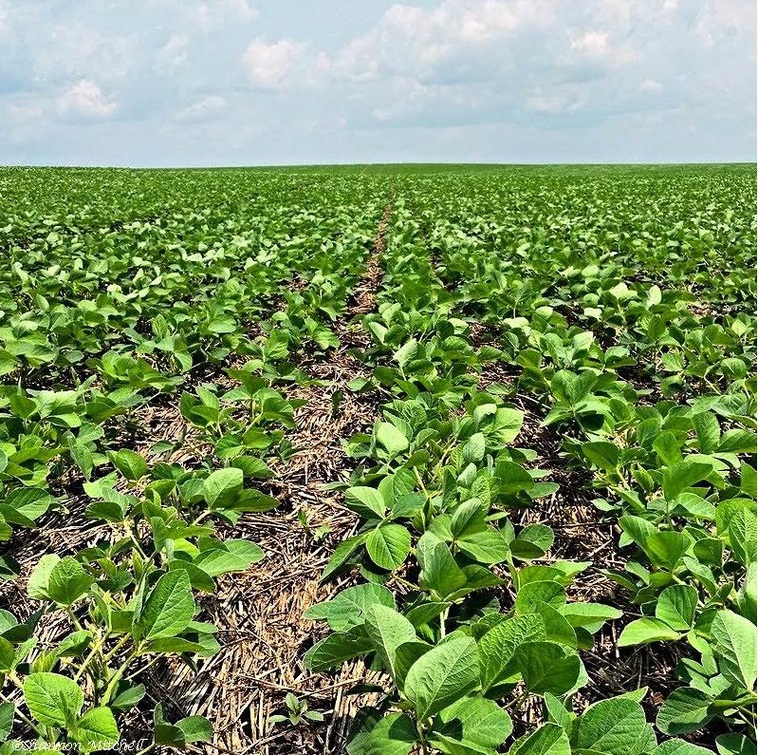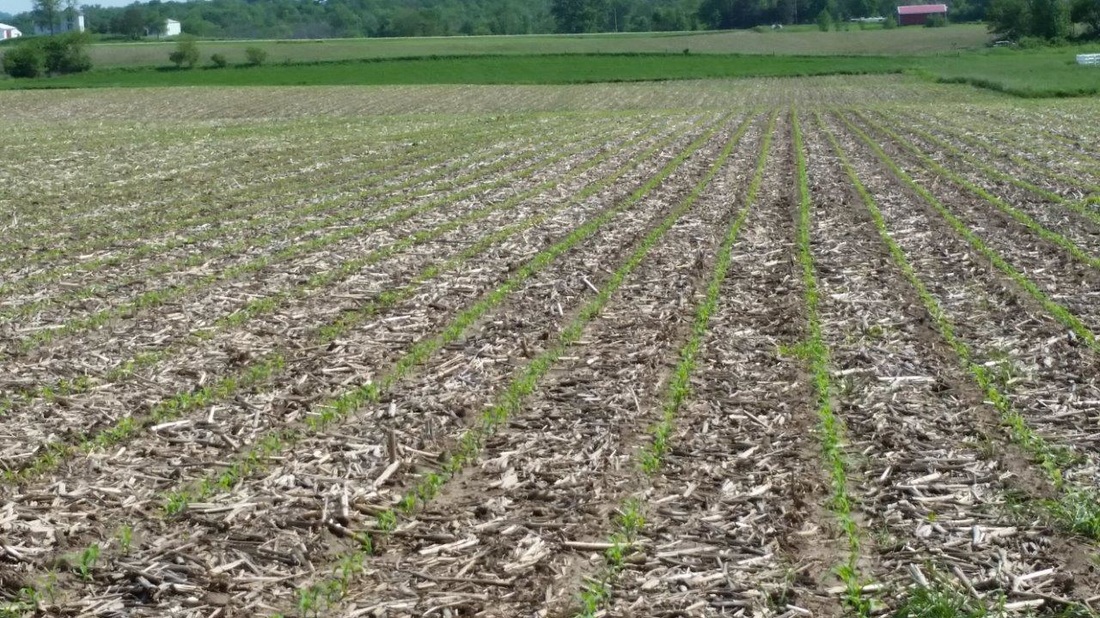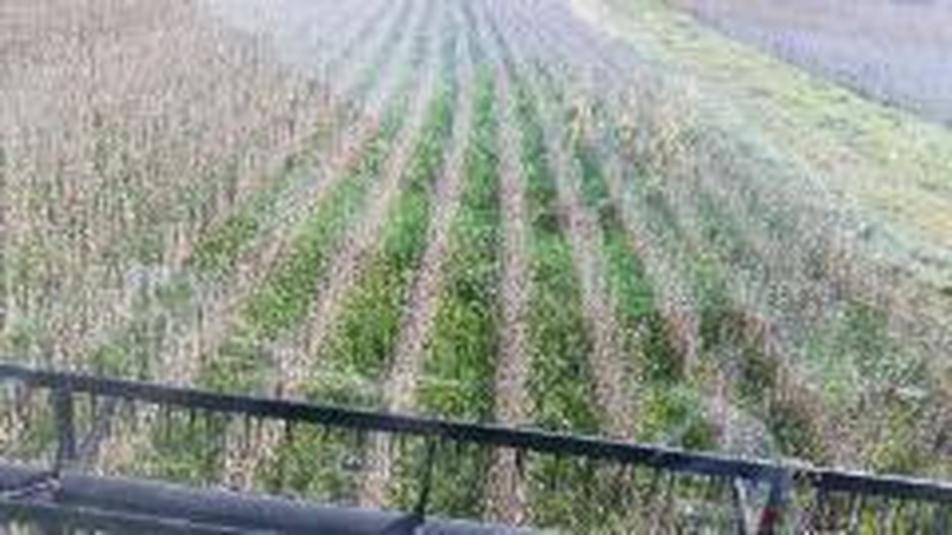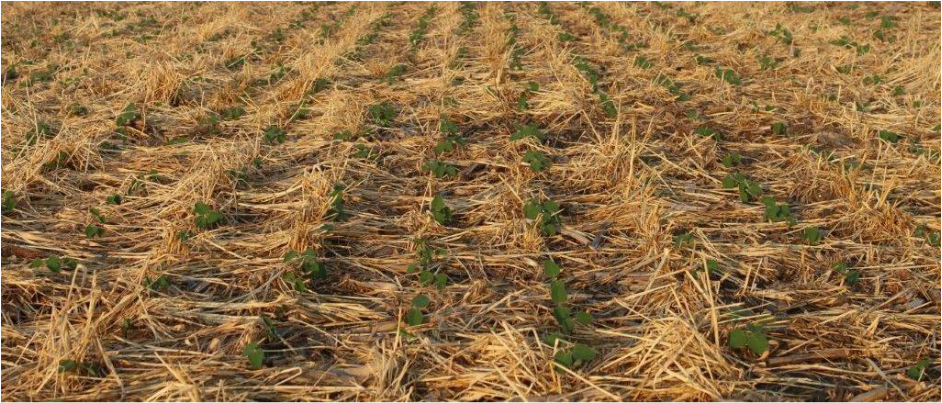2021
2020
Fall 2017
Summer 2017
Spring 2017
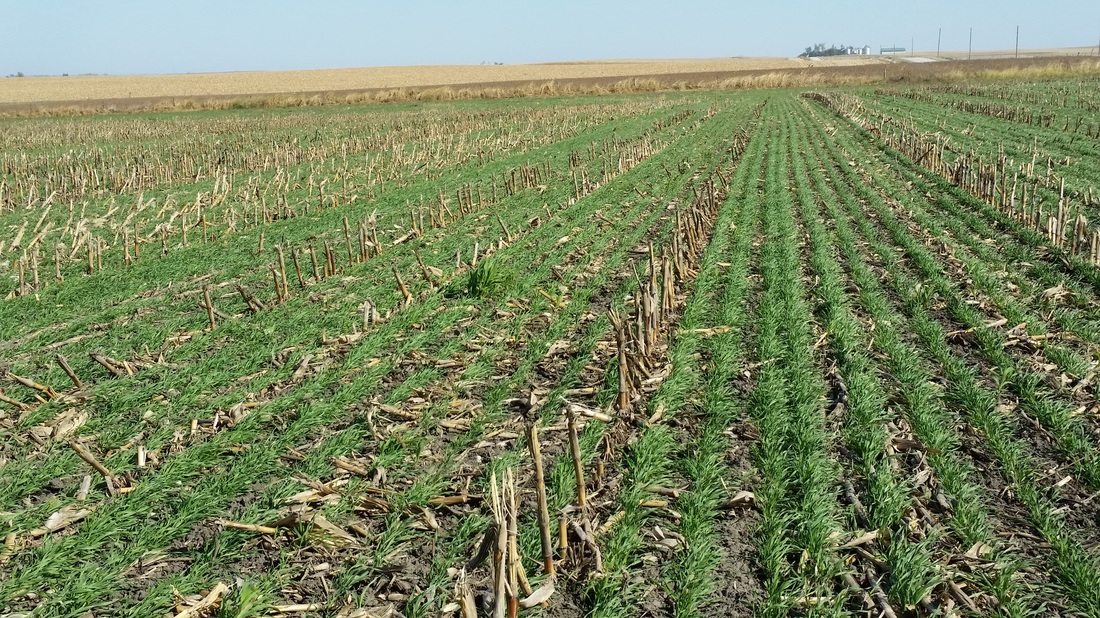
This cereal rye cover crop was no-till drilled on this field after seed corn harvest in mid-September. By getting a cover crop in right away after harvest, this producer is able to keep weeds from overtaking his field this fall, and he'll graze cattle on it both this fall and in the spring to maximize efficiency.
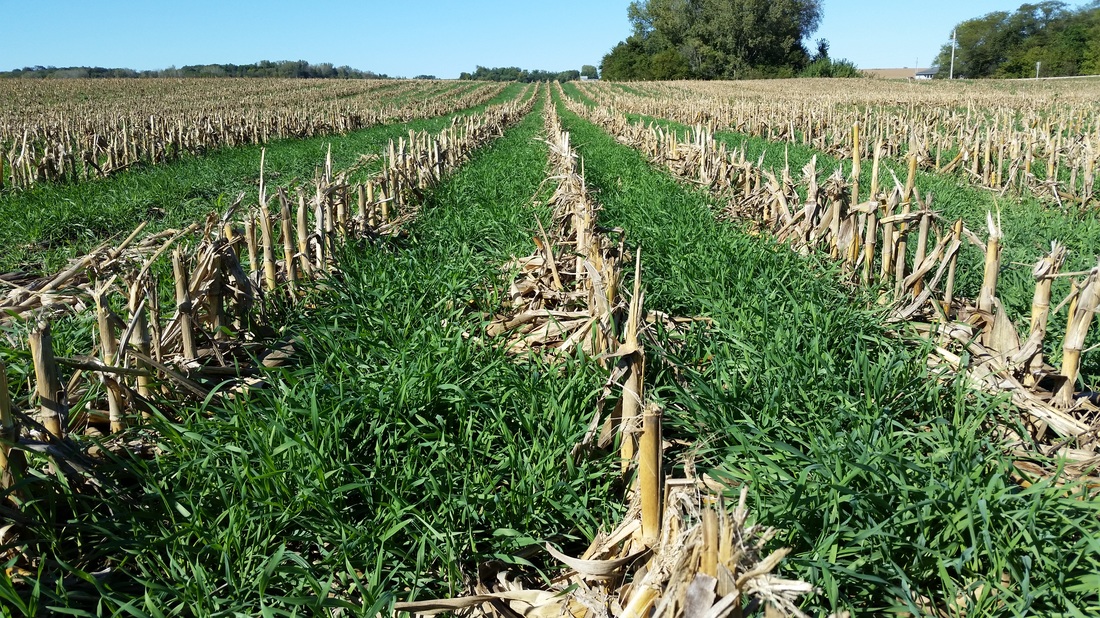
Seed corn production acres are a perfect site for fall cover crops. Because these fields are typically harvested a little earlier than conventional corn, and every 4th row (the male rows) are mowed down earlier in the summer, there is less residue on these fields after harvest, which means they are more susceptible to erosion and carbon losses over the bare winter months. This cereal rye was planted just a couple weeks ago and already has 6 inches of top growth.
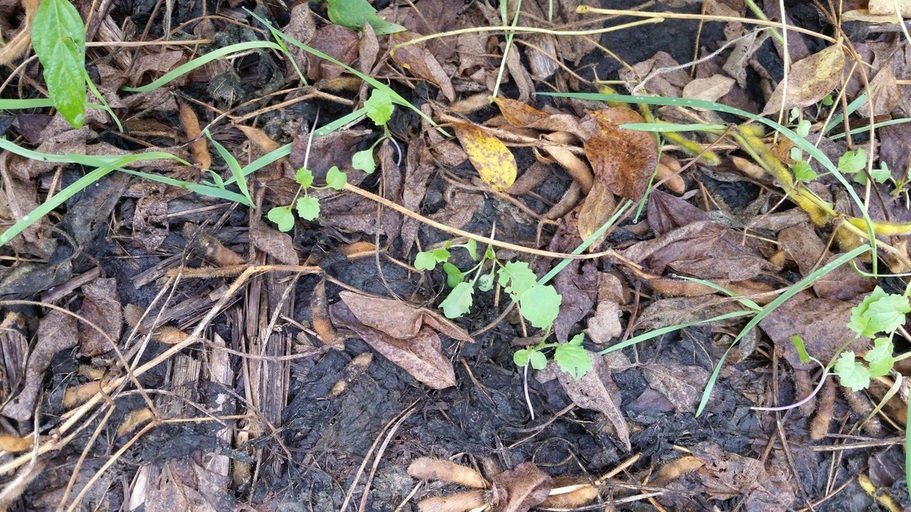
When the soybeans start turning yellow and leaves begin dropping, that's a great time to interseed cover crops in Iowa. This allows for the cover crop to get a good growth on it before frost/winter kills it off or the crop goes dormant. This rapeseed + oats mix was broadcast-seeded using a converted high-clearance sprayer with drop tubes, which can allow for better seed-to-soil contact vs aerial-seeding.
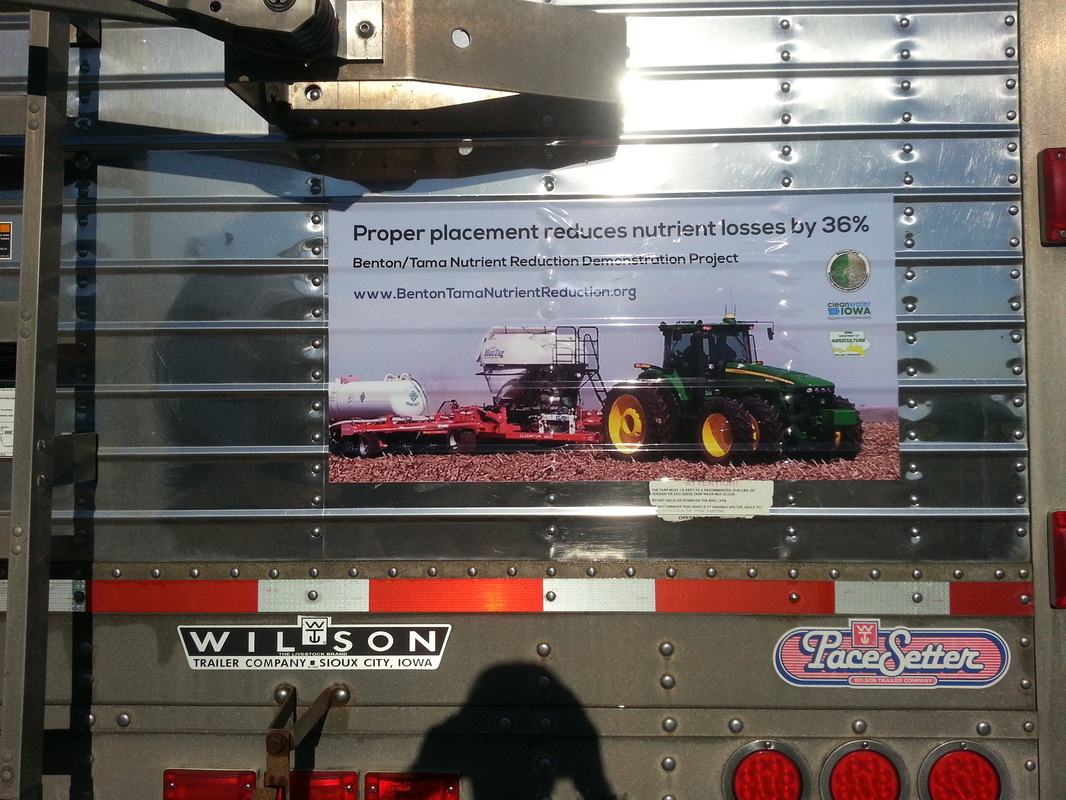
This sticker is 18" high and 36" wide. When displayed on the back door of a grain truck like this, it provides an educational fact for someone driving down the road who might not know a lot about modern farming practices, or anyone waiting in line to deliver their grain, and publicity for the Benton/Tama Nutrient Reduction Demonstration Project.
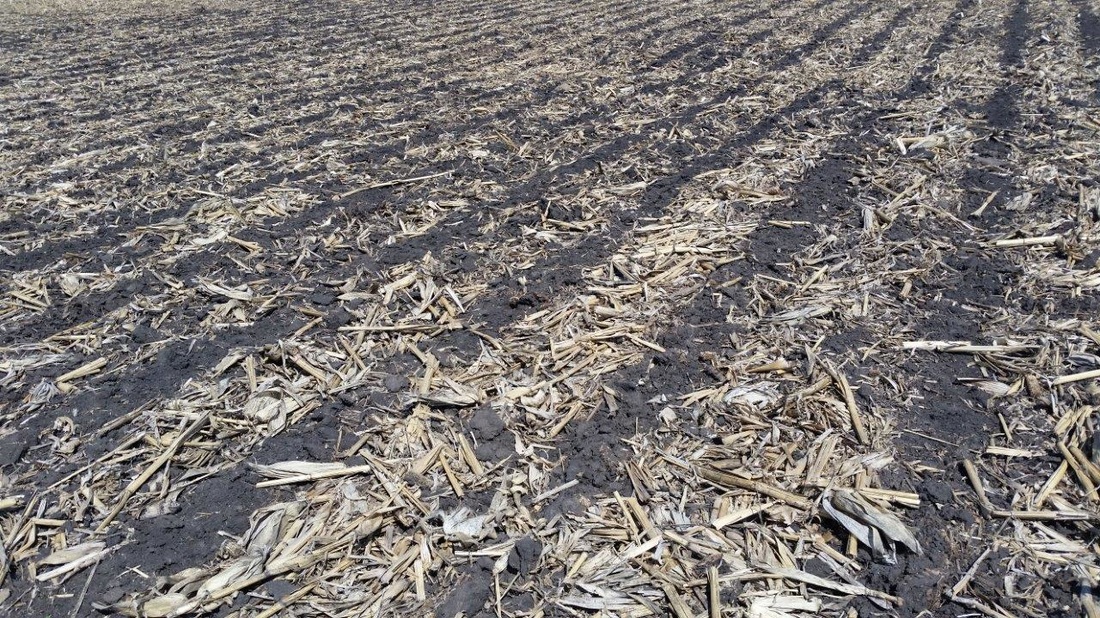
By using strip-tillage on this field, Lance Lillibridge is able to create a perfect seed bed for corn with minimal disturbance to the soil. At the same time, he applies a multi-nutrient fertilizer - including a poly-coated Urea- at a depth of 8 inches. The fertilizer is in the strip where the seed will be planted, and is covered by soil so it won't be washed away-the nutrients will be there exactly when the plant needs them. This allows Lance to successfully grow corn-on-corn in healthy soil with minimal nutrient loss.
